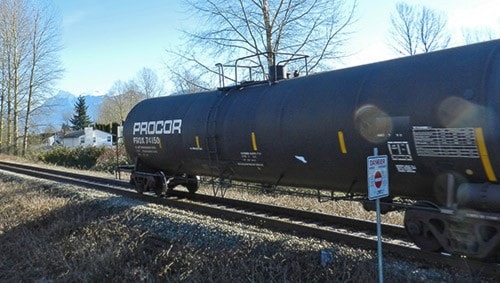Rail traffic in Chilliwack is nothing new.
Every day roughly 40 trains rumble through the city, taking grain and raw resources to Pacific markets, and bringing goods from overseas to Canadian consumers. In the past, they’ve taken our troops to war and brought royalty to our doorstep. They’ve been an iconic part of our heritage, and an institution that today still binds us together.
But lately, they’ve also been a source of concern. The tragedy of Lac-Mégantic, where 47 people died last summer, highlighted the potential danger. A similar derailment – explosive, though fortunately without fatalities – recently occurred in New Brunswick.
These and other incidents have residents and politicians calling for greater care in the transportation of goods, particularly oil.
Yesterday, the Canadian Transportation Safety Board offered three interim recommendations following its investigation of the Lac-Mégantic disaster. Among them were tougher standards for the tanker cars used to transport oil. The TSB also urged lower speeds for dangerous goods, and more thought in choice of routes.
All these recommendations have relevance for Chilliwack.
The number of tanker cars travelling through the city has increased, and will continue to increase as oil producers inland seek markets for their products. In the past four years, the volume of oil shipped by rail in Canada has climbed from 500 carloads to 400,000.
This increase has municipal politicians concerned. Working through the Federation of Canadian Municipalities, they’ve been given a more accurate description of the products being transported through their boundaries, albeit a year after the fact.
In a city like Chilliwack should that be enough?
Train traffic has had a relatively unblemished record in Chilliwack. But surely if the commodities transported change significantly, so should our approach.
One resident, who hears and feels the trains pass each day, wonders if it’s time to at least look at the speeds.
That may be one place to start.
